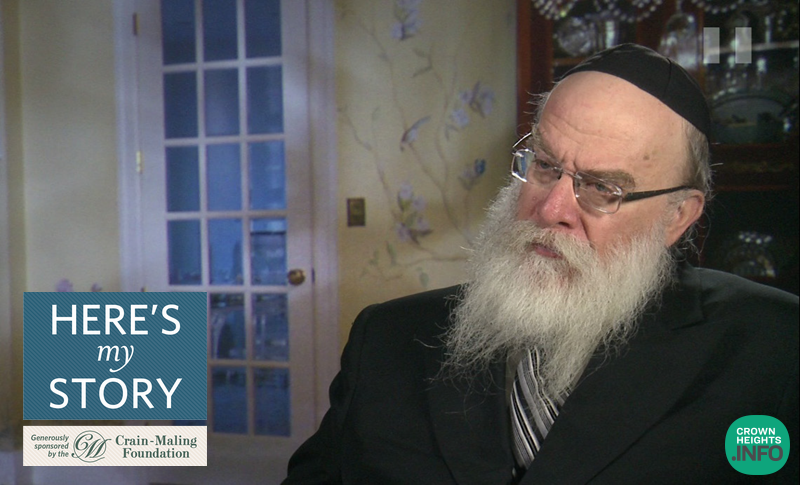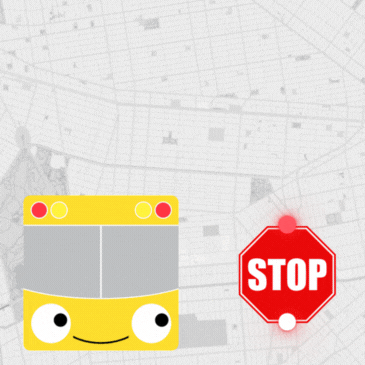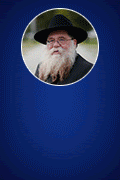
Here’s My Story: Escaping The Heat and Discovering the Warmth
Rabbi Zvi Hirsch Telsner
Click here for a PDF version of this edition of Here’s My Story, or visit the My Encounter Blog.
1960, when I was eleven, a neighbor told my mother that there was a good summer camp that had opened up a few years earlier, called Camp Gan Israel. It was hot in New York City, and so my mother signed me up and spread the word about where I’d be spending the summer. As a result, a lot of my friends also ended up registering for the camp – ten or fifteen boys from the West Side of Manhattan, including the children of Rabbi Aron Soloveichik, a distinguished rabbi and lecturer, then at Yeshiva University. This was my first exposure to Lubavitch.
The buses to the campsite in Swan Lake, New York, would be leaving from Crown Heights. That day, we took a train into Brooklyn – the first time I was ever there. When we arrived, the first thing that hit me was that I had never seen so many bearded men in one place.
We boarded the buses in front of 770, but they didn’t leave right away.
“What’s taking so long?” someone called out from the back.
“Maybe they haven’t paid the bus driver!” another voice replied.
But the reason for the delay was something else. The Rebbe was coming out to see us off. I didn’t yet even know who the Rebbe was, but I caught a glimpse of him. Eventually, we left and made it to camp.
That summer was a very enjoyable one. I liked the excitement, the atmosphere, the songs, the Torah classes – everything.
One Sunday morning, we woke to the news that the Rebbe would be visiting the camp. I didn’t exactly know what this meant, but I realized that it must be something significant, because suddenly the place became spotless. Passover cleaning pales in comparison to the way we cleaned up our bunks; you could eat off the floor. We were all given a special commemorative green yarmulke, and a picture of the Rebbe was put up in our bunkhouse.
Soon, the Rebbe arrived at the camp, in a beige Cadillac. He went straight to the bunkhouses to inspect every room, while we stood by our beds. When the Rebbe walked into our room, he smiled at us, and you could see that he was taking everything in.
We then went to the campsite’s main hall, which was being used as a synagogue. There, the Rebbe held a gathering for us, speaking to us in Yiddish, which I was able to understand a little bit. People had come to see the Rebbe from all over the Catskills, so we were squeezed into that room, with the campers in the middle and yeshivah students and young men on the sides.
It was the 200th year since the passing of the Rabbi Yisrael Baal Shem Tov, the founder of the chasidic movement, as well as the namesake of Camp Gan Israel. That anniversary was one of the reasons for the Rebbe’s visit. The Rebbe spoke about the Baal Shem Tov, among other things, and told a story about a village boy who came to the Baal Shem Tov’s synagogue on Yom Kippur.
Although this boy had never gone to school or learned anything about Judaism, he had a warm Jewish heart, and so when he saw everyone praying to G-d, he wanted to join in too. He didn’t know how to use a prayerbook, so he decided to express himself in his own way, by mimicking a sound he liked to hear every morning – the cry of a rooster: Cock-a-doodle-do! Later, the Baal Shem Tov said that because this boy’s simple cry had come from a place of heartfelt love of G-d and awe of His judgment, it had achieved what the prayers of the rest of the congregation could not.
After the farbrengen, there was Kos Shel Bracha, where the Rebbe gave out wine from his cup, along with a blessing. Mrs. Krauss, an older woman who served as the camp nurse, also went over, in her white nurse’s uniform, and the Rebbe gave her a nice blessing too. Everyone also received a pocket-sized “Mincha and Maariv” prayerbook, and we all prayed the afternoon service together with the Rebbe.
Then, the Rebbe went to take a tour of the rest of the campgrounds. He walked very quickly, accompanied by his secretaries. Rabbis Avremel Shemtov and Moshe Lazar, who were the two pillars of the camp, and some other members of the staff also went along. There was a very exciting atmosphere, with people running after the Rebbe, pictures being taken, and even some film, which was rare in those days. The Rebbe took in the whole place, from beginning to end.
The Rebbe asked about adding a basketball court as well as a handball court – of course, a few weeks later, the camp put up both – but he said there was “no need” for a tennis court.
After an exciting few hours, the Rebbe left and continued to the nearby Camp Emunah girls camp. The whole experience made a tremendous impact on everybody who was there, and especially on me, who had never seen such a thing before.
I went back to Camp Gan Israel for the next few summers, and although the Rebbe didn’t come back to visit, he placed a great emphasis on the importance of camp. There were letters and telegrams, and his secretary Rabbi Hodakov used to call the camp on his behalf to make sure that everything was going well.
Through camp, I got to know more about Lubavitch, its customs, and philosophy. Of course, there were many stories and discussions about the Rebbe and his teachings.
I noticed that some people would drive into Crown Heights every Shabbat, or whenever the Rebbe was expected to have a farbrengen. By 1963, when I was fourteen, I very much wanted to attend one of these farbrengens. Although my father wasn’t in favor of my leaving camp, I was adamant, and so he sent a letter to Rabbi Shemtov giving me permission.
That Shabbat was the 20th of Av, the yahrzeit of the Rebbe’s father. So, in addition to being at my first farbrengen in 770 and hearing him recite a chasidic discourse, I also heard the Rebbe lead all of the prayers that Shabbat. 770 was smaller than it is today, and the place was packed, with people hanging from the sides of the room, and pushing to be able to hear the Rebbe. The scene left a great impact on me.
Right after Shabbat, we went back to camp.
Later I found out that Rabbi Shemtov mentioned to the Rebbe that I had come to this farbrengen. In reply, the Rebbe wrote a note following up on me: “Was there a continuation?” he asked.
And indeed there was. After finishing high school, I had my first personal audience with the Rebbe.
Shortly afterward, I transferred to the Chabad yeshivah system in Israel. Over the following years, I attended many more farbrengens with the Rebbe – first as a student in his yeshivah at 770, and later as one of his emissaries. And all of this began with just a few summers at camp.
Rabbi Zvi Hirsch Telsner served as a Chabad emissary in London for 33 years, working in the field of adult education and as rabbi of the Finchley Central Synagogue. In 2007, he moved to Melbourne, Australia, where he serves as the community dayan. He was interviewed in June 2014.












